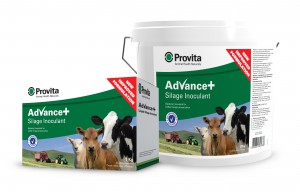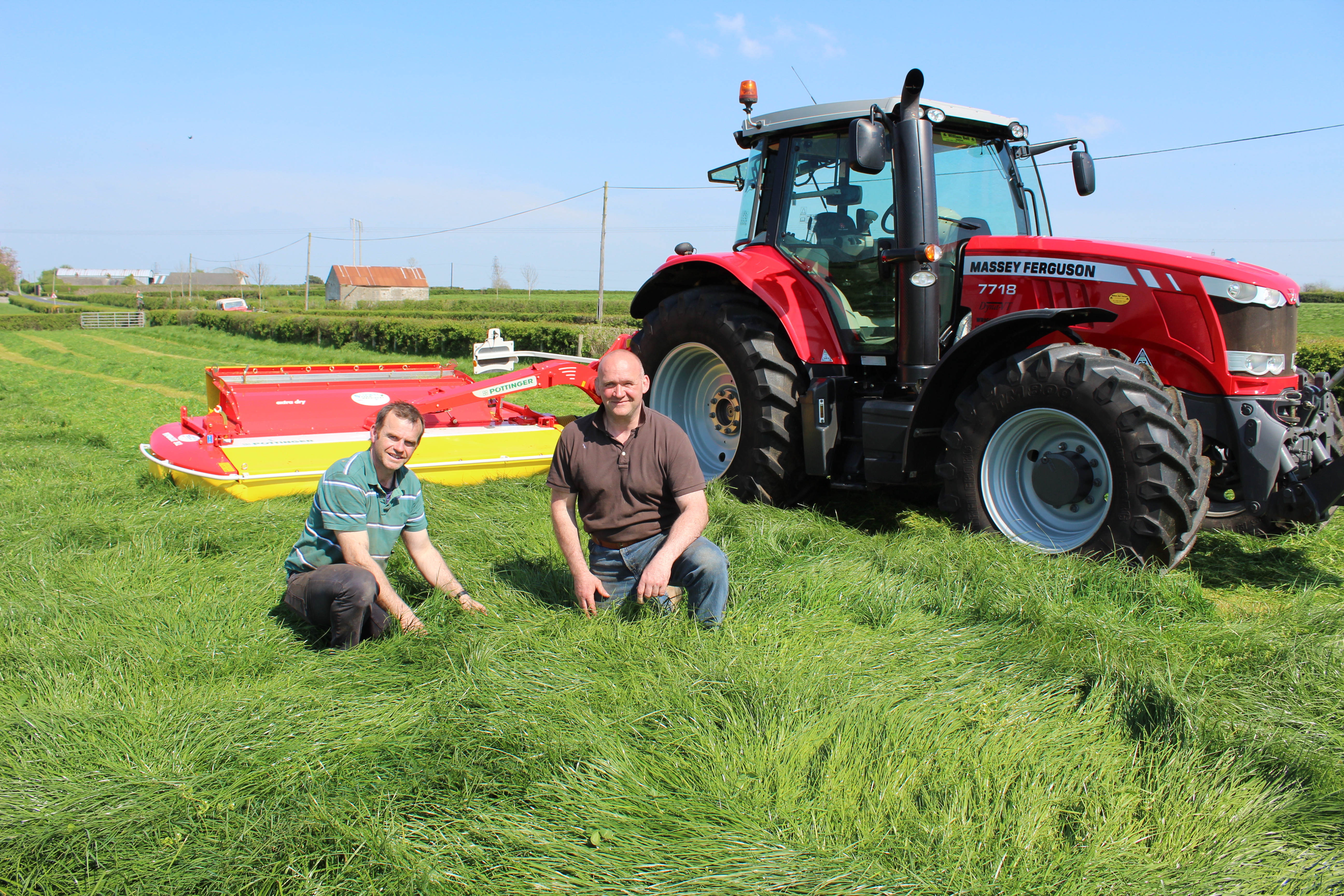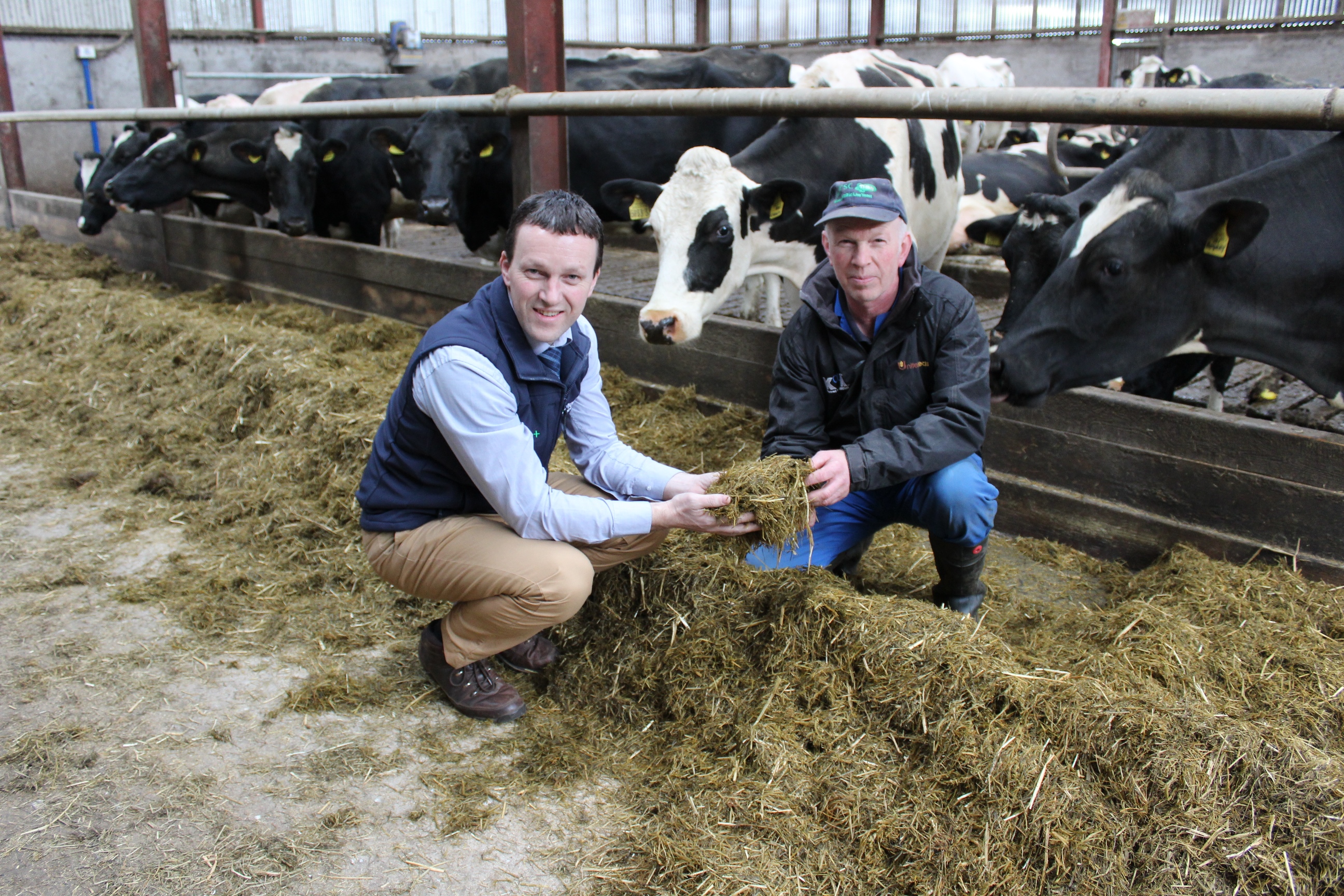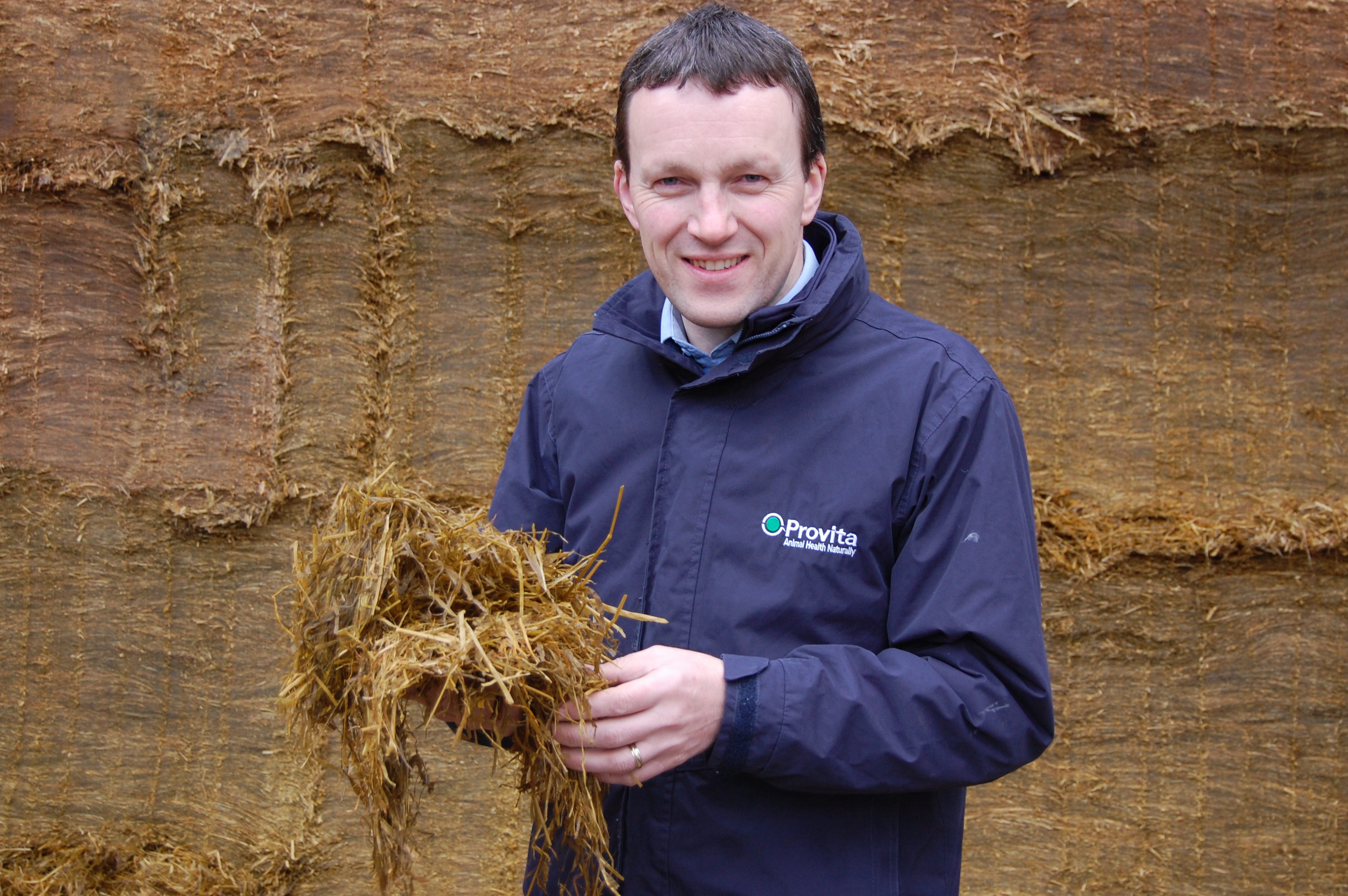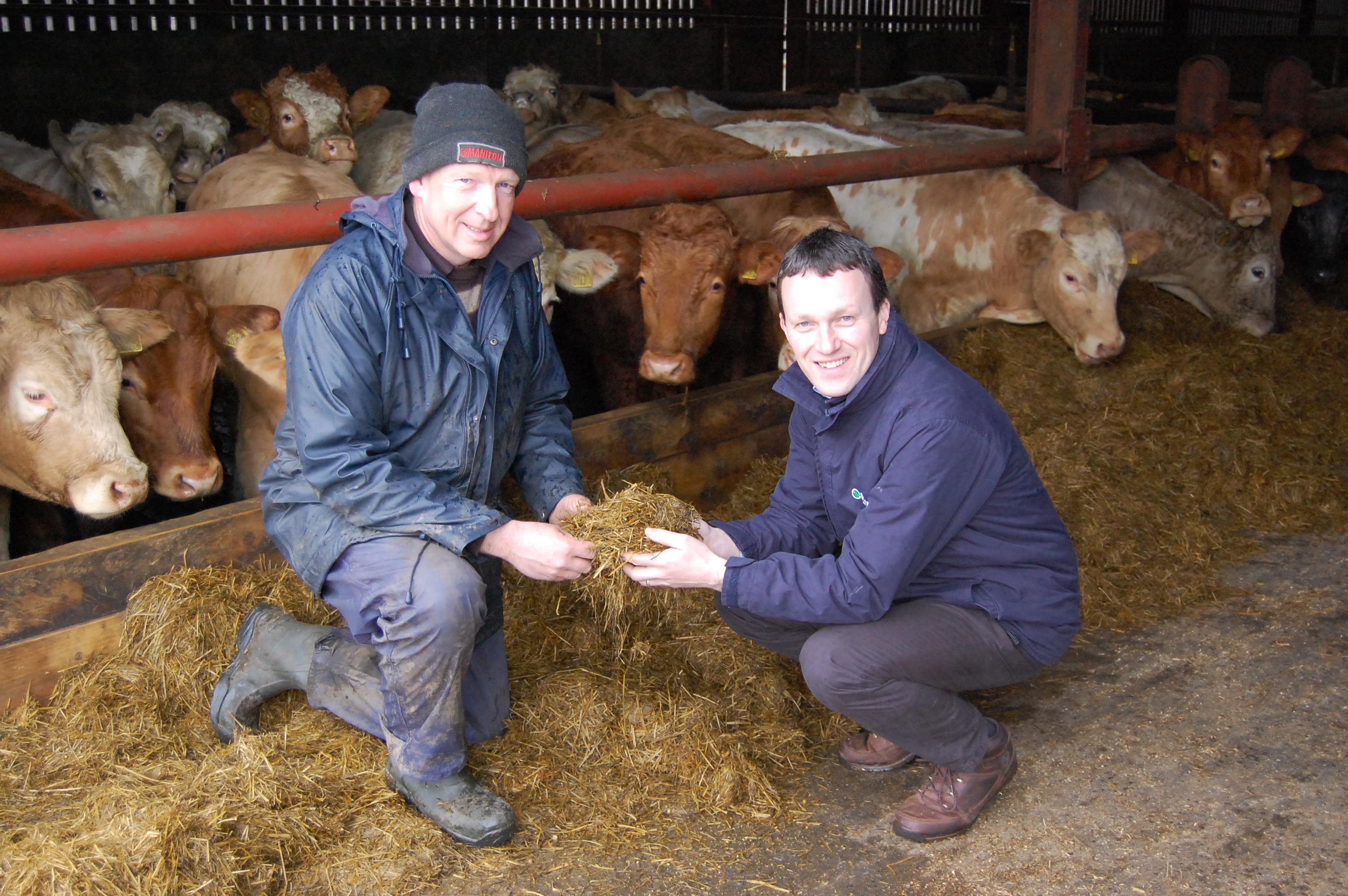Provita Advance+ silage inoculant is a unique formulation combining EU approved and UFAS approved lactic and acetic acid bacterial strains at a guaranteed rate of 1.2 million cfu per g of forage. Performance benefits include +1 litre of milk per cow per day and up to +30% better growth rates. Better fermentation is also shown with 46% more sugar, 33% less ammonia and double stability time at feed out. (Source: EU reg data and in-house data)
advance+ silage
Increased Demand for Round Bales Treated with Silage Inoculant
An increasing number of silage baler contractors are now putting on silage inoculant applicators, due to increased demand from farmers.
Do you want icing on your cake?
The question is often asked as to whether silage inoculants are needed when the weather is good, or is it just when the weather is poor? Provita Advance+ is like the icing on top of the cake, silage will be even higher in sugars and nutritional quality in good weather conditions.
Advance+ Silage inoculant – the perfect choice for Northern Ireland
At this time of year farmers are bombarded with information on silage inoculants. With so much variation between years and cuts, it’s very difficult to compare silage inoculants or even treated verses untreated crops. Many products claim to be better than the next one, so how can they actually be compared?
It is advisable to check the bacterial strains are EU approved. The EU registration system has standard parameters to measure efficacy such as dry matter losses, pH, lactic acid and ammonia plus stability for wholecrop and maize silages. Parameter testing shows efficacy on easy, moderate and difficult to ensile crops. Some of the inoculants, in particular the ones that only apply 100,000 bacteria per g of grass, failed to show a benefit in moderate and difficult to ensile crops.
Wright family farm continues to see great results using Advance+
One farm who has used Advance+ since its launch in 2013 is Jim and Dean Wright from Portadown. They have targeted more milk from forage as an essential performance target.
Smell the sweetness
Advance+ Silage Inoculant. Unique formulation combining EU approved lactic and acetic acid bacterial strains at guaranteed rate of 1.2 million cfu per g of forage. FREEPHONE 0800 328 4982
Advance + delivering optimal silage quality and almost zero forage losses on Tyrone dairy farm
Given his herd’s predominantly autumn/winter calving pattern, making good silage is an absolute priority for Co Tyrone dairy farmer Cyril Maxwell. The Augher man is currently milking 130 cows, averaging 8,300L over 305 days
“The cows calve between October and April,” he confirmed.
“The aim is to produce maximum levels of high quality milk from forage. This includes silage and grazed grass. The cows are currently receiving 2½t of concentrate per lactation.
“Our current milk quality is good with butterfats averaging 4.23% and proteins 3.15%.”
Gettin more liters from forage
Data from the Agrisearch “Grassland performance and its relationship with profitability on 10 Northern Ireland dairy farms” shows milk from forage ranges from 2260 ltr to 4550.
Two of the farms with this highest margin were managed very differently but also very efficiently, one yielding 6000 litres on 1 t of meal and the other yielding 8700 litres on 2.3 t of meal. Both achieved approximately 3500 litres from forage. This should be a realistic aim for dairy farmers in Northern Ireland.
Making better silage leads to faster finishing on Tyrone beef farm
Alastair Doran runs a combined broiler and beef finishing farm on the outskirts of Castlecaufield in South Co Tyrone. The focus of the beef business is the purchase of high quality suckler weanlings – both steers and heifers – which are finished through to beef over a 15-month period.
“I normally finish 200 cattle out of the house from January through until, the end of April,” Alastair explained.
The chequered flag is about to be dropped on 2015 silage season
Most weather forecasters are currently predicting pretty settled conditions right through to the middle of next week. So the coming days should give many farmers an opportunity to get on with their first cut silage making operations.
“The focus must be on making high quality forage over the coming days,” explained Provita’s Tommy Armstrong.
“A high percentage of grass swards are at the perfect stage for cutting. Yes, crops might be a bit light at the present time, given the cool conditions over recent weeks. But a large tonnage in the pit should not be the core objective for farmers at this stage of 2015.
“Most producers have a fair bit of silage from last year. And, given these circumstances, the real challenge is that of making high quality forages that will drive milk and beef performance levels next winter.”
